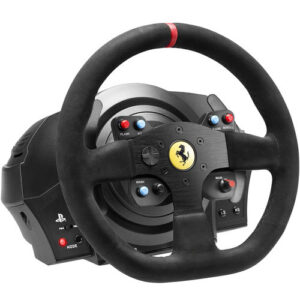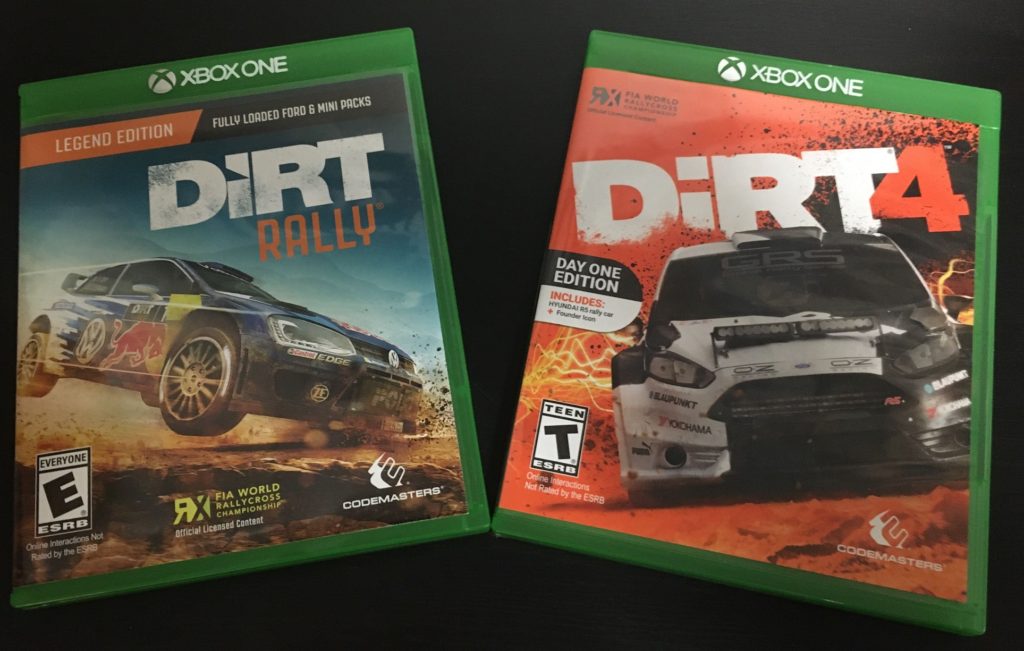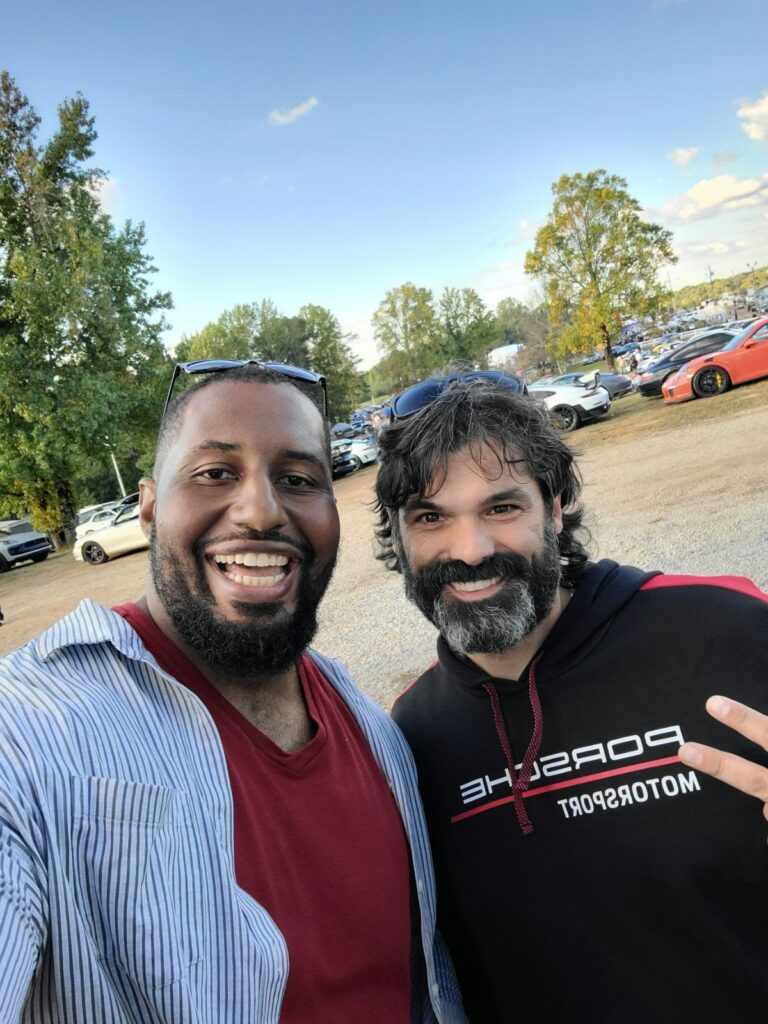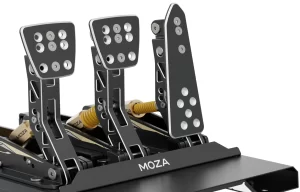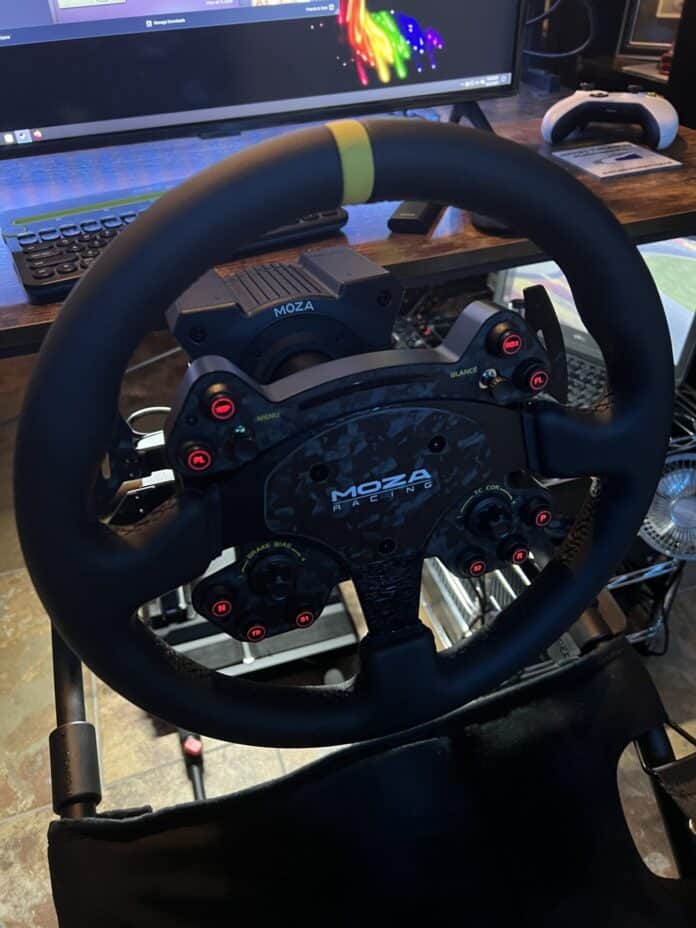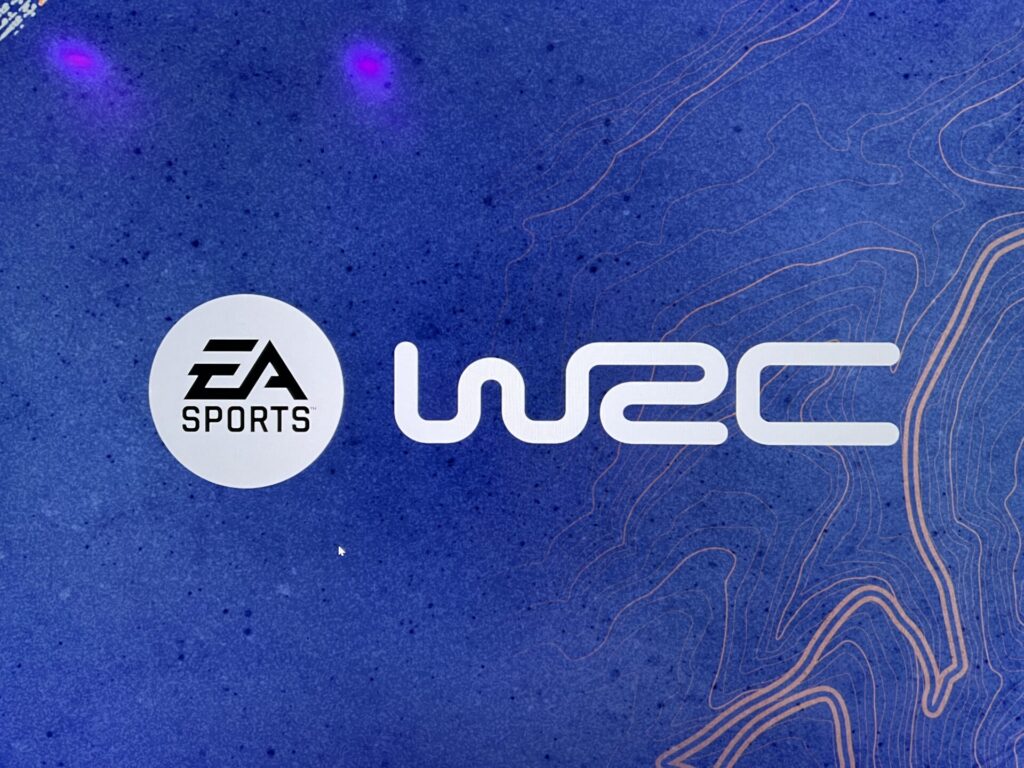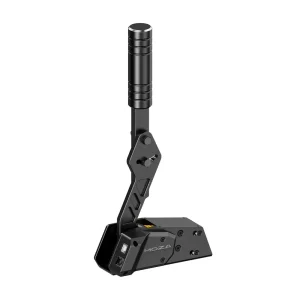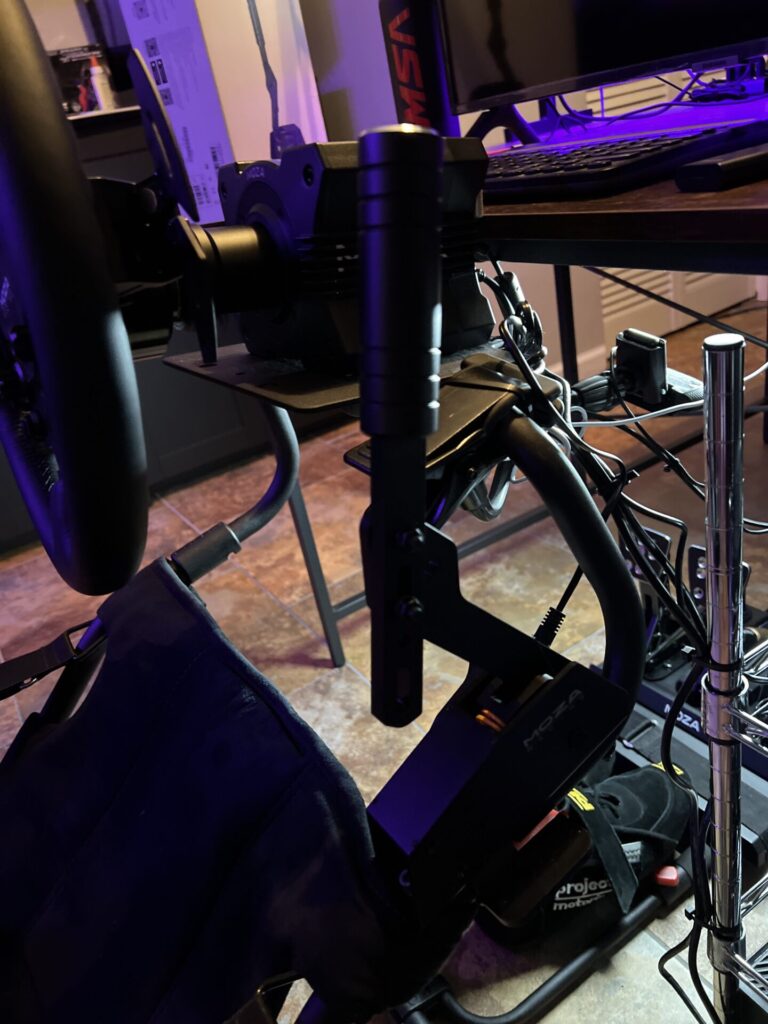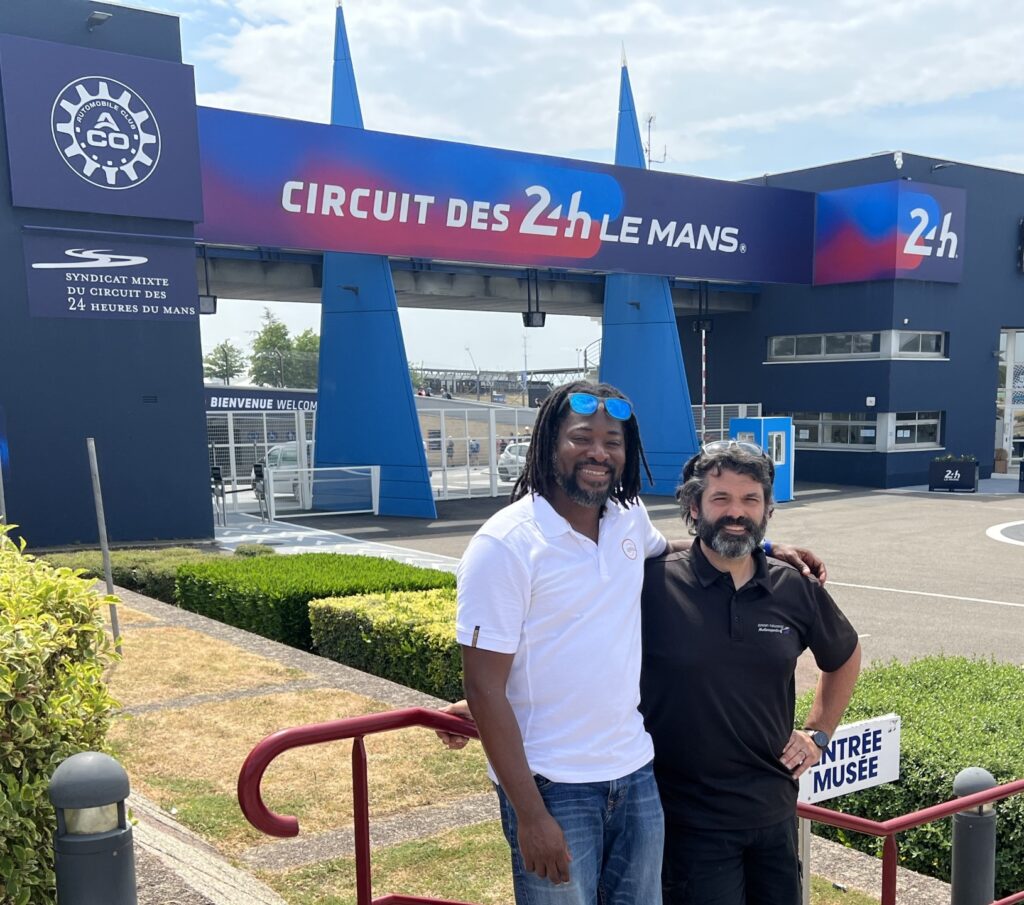Racing games and simulators have been around since the days of Pole Position and the Atari platform. Being part of the original “video game generation” means we were the first ones to see and try it all. For those of us that have stuck with the hobby over the last 40 years, we’ve also had it evolve right in front of us.
2020, the year that changed everything. It not only changed the what we played, but how we played, and what gear we were bringing to events. Prior to the pandemic, exhibition nights on iRacing, Forza, Gran Turismo, and >insert your favorite title/console here< were pretty common. “Run What You Brung” events with people having fun and turning laps.
Despite the lockdowns, “the show must go on,” and once the large media and corporate entities got involved, it suddenly became “cool” instead of “super nerdy” for the subset of virtual racing that was relying on space-aged near-realistic tech to step out of the shadows and become the defining standard for the way we’re racing online today.
Changing the Game.
Companies like Fanatec, Asetek, and Simucube were no longer considered discretionary income-based hobbyist equipment. If you wanted to play with the big dogs, you had to pay. Leaders in the commercial space like Logitech and Thrustmaster, who’ve been making “sim gear” for the masses for ages were downgraded to the toy section of your local big box stores. “No one wanted that *junk* anymore,” I was told.
Only slightly offended, I was admittedly continuing to let the patina settle on my aging hand-me-down Thrustmaster TX 599 EVO 30 + T3PA-Pro Pedal setup (aka “Junk”). But I was also tired of playing racing games with a controller and getting beat by people with proper rigs. So if you can’t beat them, join them, right?
As I’d outlined in a 2020 article, I went back to my roots and starting playing Rally-inspired or WRC-sanctioned titles. And to tell you the truth, I was lovin’ it. My setup was cross-compatible with XBOX and PC, making it convenient to switch between favorites. My guilty pleasure has always been Group A cars at Monte Carlo in the snow.
Calibration? What Calibration?
Thrustmaster calibration options don’t really exist, it’s basically just plug-and-play. The previous owner of the pedals did switch the position of the brake and the clutch, which I could never figure out how to reverse. However, it did allow me to practice my ruddering and left-foot-braking. Meanwhile, I did go as far as to set up an entirely separate system to livestream my races and practice sessions, which included steering and foot cameras, as seen below.
Getting pushed over the ledge.
It wasn’t until I met David Middleton from MIE Racing that things started to change for me. He’d come on Break/Fix podcast and taught us about his eSports + STEM program. We had him back on the show later that season with Robb Holland, and spent time together at Petit Lemans in 2021. We became fast friends, staying in touch frequently. Then came the 100th LeMans. David and I spent the better part of the week together, and up to that point he’d teased me with different upgrade scenarios for my rig. Why I should do this, or buy that; and I’d kept it all at arms length.
Once we got to LeMans, and having a captive audience, David took me around and showed me the finer points of all the different systems that were on display at LeMans. We tried all different combinations of Fanatec, Simucube, Asetek and the like. It was a great diversion during downtime at the track.
There was one evening in particular that we went to a party at one of the campsites where David’s friends had brought a pair of mobile-simulator stations with them from their Sim-Rig business. David’s hype for how good the gear was all came together when he and I went head-to-head doing time trials in Assetto Corsa at tracks we knew: SPA, Watkins Glen and VIR. Never having used a proper rig before but with plenty of folks giving me pointers, I only ended up being a couple tenths off David’s time and if memory serves, I got him at Watkins Glen! (a track that I’ve turned 100s of real laps at).
That night left a lasting impression on me. I didn’t know it could be that good. I didn’t know what I’d been missing. For the next 6 months, whenever David and I would chat it would always devolve into a “What Should I Buy?” scenario. I would continue to drive on my Thrustmaster rig, but it wasn’t nearly as satisfying; I’d been corrupted. Climbing out of my Playseat cockpit, I’d be left saying “this is such weak-sauce,” and the one thing I always lamented about the most, “I could be faster, if I had a handbrake.” With the realization of how numb my setup was with <3nm of force-feedback and soft pedals, the use of exaggerated early apexing and Scandinavian flicks was getting harder and harder when I moved up to WRC-10 and beyond. The Thrustmaster just wasn’t able to keep up.
It wasn’t until we got together for Petit LeMans 2023, and David introduced me to recent Break/Fix guest Trevor Marks from K-53 that it all started to come together.
During sidebar conversations, I started to get Trevor’s opinion on “What Should I Buy?” and not knowing my whole back story and virtual racing history, some of his advice and questions were targeted differently than David’s. Very thought-provoking questions like: “What do you want to get out of your system? What experience are you going for? What’s your budget?” and most importantly “What titles are you driving on?” At that point, I was only really running Assetto Corsa Competitzione (ACC) and WRC-10.
There was a brand though, that kept surfacing as a common denominator between everyone I spoke to: “Well, you could always try MOZA.” Having never heard of them, I started doing my research, and asking more questions. The night before Black Friday, I get a text from David saying, “If you’re gonna do it, check MOZA’s site tomorrow. I hear things will be discounted.” #peerpressure.
He was right, it was time to move on. I waited for the Black Friday sale at www.mozaracing.com to officially hit, and ordered myself a CS R9-V2 wheel + hub and CRP pedal combo.
I had that moment, you probably know it well, cart full of goodies and you’re like “nah… this is stupid, don’t do it” but the devil on my shoulder got the better of me and in a complete never look back #sendit moment, my order was placed. Mind you, I still didn’t have a handbrake. I figured, “let me try out the system and see if I like it before I completely commit.” I have 30 days to return it, right?
The Long Journey Home
I will admit that I was warned that shipping times could be slow. But it took from November 24th to December 31st, 2023 for all of the gear to arrive. The parts came in three shipments, with the most important (the hub) coming last.
After some careful modifications (aka “mcguyvering”) of my Playseat, I was able to get all the MOZA equipment set up. Overwhelmed with excitement and not taking the time to read any of the directions, I fired up ACC to see what this system could do.
Again… Calibration, What’s that?
A quick phone call to David straightened me out. I downloaded the MOZA Pit House software and suddenly everything changed. It began scanning my system looking for titles through Steam, the Microsoft Store and locally installed and alerting me that “automatic baseline calibration” could be applied to each title individually. Shortcuts? Yes, please.
Since I’d been waiting for the gear to arrive, I’d actually added 3 more titles to library: Forza (8) Motorsport, Automobilista 2, and the new EA WRC (aka “WRC-11”). I’ll save my thoughts on FM8 for another article, but I was excited to try my MOZA with ACC and the other two.
Not for trying, but everything felt wrong, especially the pedal box. It was like stepping on concrete and getting maybe 10% brake pressure. My lap times were off, and the gaming experience was just ruined. What had I done?
During my frenzied unboxing of all the gear, I’d overlooked the various springs and dampers that came with the CRP pedals. After searching for documentation on the spring rates and urethane durometers, I found a combination that seemed to work for my aching calf muscles. Combine that with some adjustments through the MOZA Pit House software, I was able to dial-in the pedal feel to where I like it, and most importantly to be able to trail-brake in any game. So this… is Calibration! Gotcha.
How it all comes together… taking it to 11.
Many folks love their Assetto Corsa and iRacing titles, but as I’ve mentioned before, I’m a die-hard Rally fan, growing up during the Group B era; it’s my favorite discipline of Motorsports next to Sports Car & Endurance Racing. Tuning the MOZA for circuit racing is pretty easy. You definitely get more road feel, steering feedback and curb effects. But for the most part, the gear isn’t overly taxed because braking points, turn-ins, apexes and track-outs *should* be consistent lap-over-lap. Not saying that’s boring, but like Trevor had told me, “any piece of kit can turn virtual laps at Road Atlanta efficiently.” But Rally is extremely harsh on the system. Point-to-point races over varying terrain, even running the same stage over and over doesn’t present the same conditions, and it’s part of the charm of the simulation.
WRC debuted on November 23rd, 2023 (the day before I placed my order), and I’d heard rumor that the 11th iteration of WRC was going to be the last for its French developer Kylotonn (published by Nacon) officially under license from the FIA & World Rally Championship. In recent months though, we’ve seen a bit of the big fish eating the little fish, as Codemasters absorbed Slightly Mad Studios (Project Cars) into their portfolio, and then Codemasters was acquired by Electronic Arts (EA). What we didn’t know was that EA was also acquiring WRC from Kylotonn.
The end result of this merger is a pleasant and much needed surprise. EA’s WRC is the best of all worlds taking from WRC 10, Dirt Rally and DIRT creating an accurate, beautiful, and amazing driving experience. With new gear ready to go, it was time to test its limits on some of the most grueling courses in the world. My initial runs proved that I *needed* the handbrake; I couldn’t rely on my old tricks anymore. So I placed a rush order for the all-aluminum MOZA HBP Handbrake add-on.
With some more modifications to the Playseat, I got my handbrake securely mounted and ready for battle. The handbrake plugs into the back of the steering hub and is considered “a slider” just like the clutch, and also includes its own adjustable spring rates and dampers. I left it stock, as I liked the feel right out of the box.
I broke my test down into what I consider an easier stage, Rally Sweden, in the snow. There are some tight “bob-sled” sections throughout the first part of the run while the rest of the 10 mile stage opens up with fast corners making for an all-around great test bed. The handbrake proved immensely useful in correcting the cars, but also being able to negate the Hairpin, Acute, and Square Turns. But it also required rethinking how to approach the turns, and with more practice I’ve gotten a lot better at.
WRC1
The WRC-1 cars (like the Hyundai i20 in this video) are aided by Hybrid technology making them very fast but extremely capable.
WRC2
The WRC-2 cars (like the Polo GTI R5 in this video) are currently my go-to favorite. Maybe it’s a placebo or maybe it’s my bias, but the VW is the best I’ve driven so far; even though the Skoda Fabia is basically the same car with slightly more horsepower.
Group A
The Delta HF Integrale Group-A car has been a standby for me in many Rally titles; and my favorite on courses like Monte Carlo. It’s just quick and agile enough, but in this sim it’s got some lift throttle oversteer that can catch you off guard if you’re not careful. In contrast, the Ford Escort Cosworth RS is much more tame and can be driven mostly with your right foot.
Group B Legends
I haven’t tried all of the Group-B legends yet, but the Audi Quattro S1 and the Renault R5 are very difficult to drive. Maybe with more practice I’ll master them, but as of now I would label them “unpleasant.” The Delta S4 and 037 are much easier to handle despite their sometimes overly twitchy reactions.
As you can see from the videos above, I chose two modern cars, and two “vintage,” all on the same stage of Rally Sweden. The beauty of WRC is that every car is different, from the sounds down to unique handling characteristics and tuning adjustments. It definitely favors the newer cars like the WRC-1 Hybrids (GR Yaris, Hyundai i20, etc) and the slightly older WRC-2 cars like the Polo GTI and Skoda’s. Not all of the Group-B cars are as unruly as the Audi Quattro S1. The Delta S4 is quite manageable, and the game seems to favor Lancia because even the HF Integrale and the rear-wheel-drive 037 are fun to drive without a huge learning curve.
The one thing I really dislike about the game comes in career mode when you’re forced to complete Time-Distance-Rally stages between larger events. These require careful maintenance of average speeds to achieve a perfect, or at least minimize the penalties, for arriving early or late to each check point. This part of the simulation can be challenging but at the same time very boring. Who wants to drive around in a MK2 GTI at 40mph? Not me.
Overall, WRC takes an immense amount of physicality along with that tons of concentration compared to other titles I’ve played. With so many moving components and force-feedback of the MOZA, by the end of a Rally you feel like you’ve just completed a workout. If I could make one recommendation to EA/Codemasters is that they fix the carried-over WRC-10 career mode. It’s still clunky and it would be more fun if they could recreate “seasons” based on a car you’d want to drive. Think about the epic 1989-1992 Group A championship. How cool would it be to run Monte Carlo as seen in 1992 behind the wheel of a Lancia Delta HF Integrale?
Even though the critics at IGN didn’t give EA WRC favorable marks, they’re not viewing it in the same way I am, having in some ways suffered through the previous WRC titles and the DIRT and DIRT Rally franchises. This game isn’t perfect, but it’s a 9 in my book, and I’m hoping the forthcoming DLCs take it to another level. As for the MOZA, if my scale is 0-10, we’re at 11. The build quality is exquisite, the software and calibration is great, the feel is amazing and some of the features are unique. But as David and Trevor told me, when you compare all the columns on your spreadsheet – value for money – the MOZA was the right choice, and I can’t recommend it enough! (or EA WRC for that matter). If you’re looking for advice, don’t hesitate to reach out to either of them for help and guidance, as it made a world of difference for me, talking to subject matter experts.
Shoutouts
First off, shoutout to John Caffese at ProjectMotoring for providing the awesome driving shoes I wear when on my Sim. They’ve always made the experience so much better and more comfortable. Secondly, to Mark Shank for help with the AI generated cover art for this article. Next, to Trevor Marks from K-53 for collaborating with us on The Motoring Podcast Network (and Break/Fix Pod) along with some sound advice. And finally, 99% of the blame and credit to my friend David L. Middleton at MIE Racing; Without *YOU* I wouldn’t be in this mess! – Seriously though, thank you David and to everyone for helping me get to the next level and continuing to enjoy Sim Racing for years to come.
This article first featured on Gran Touring Motorsports; republished with permission.




